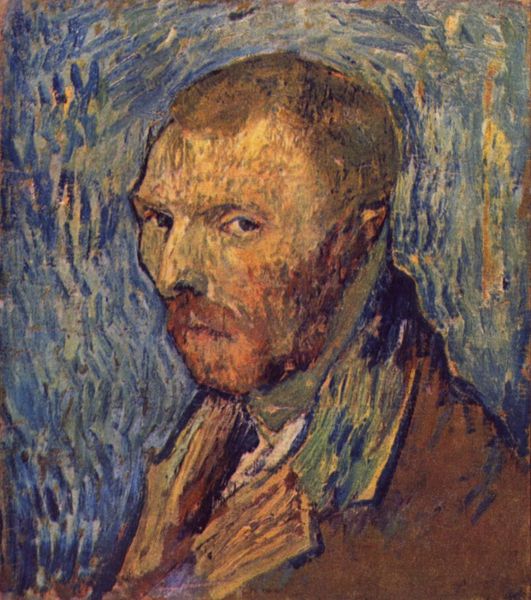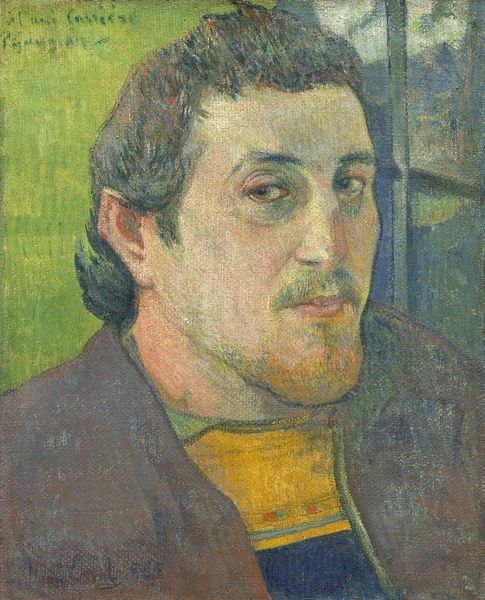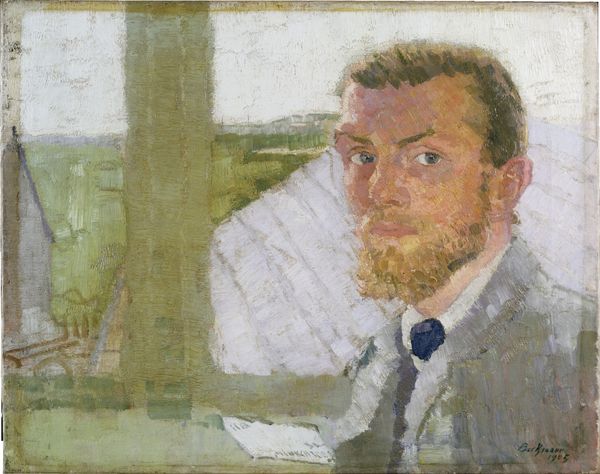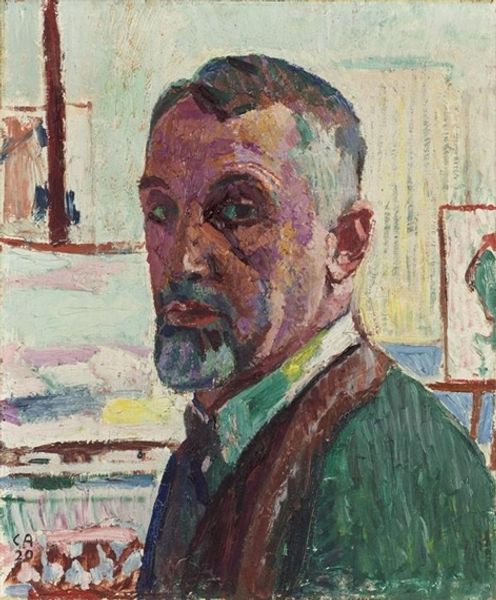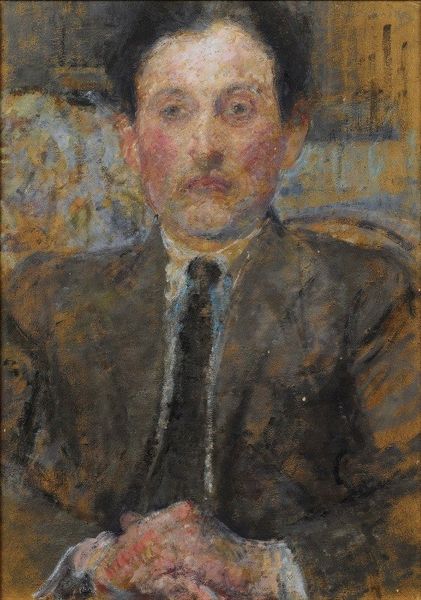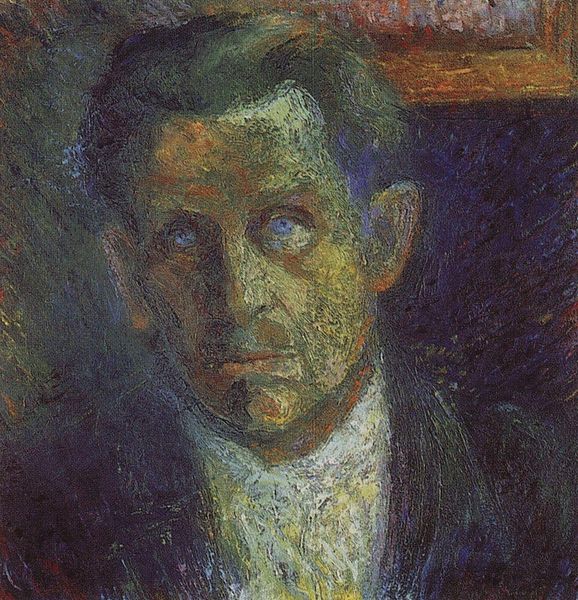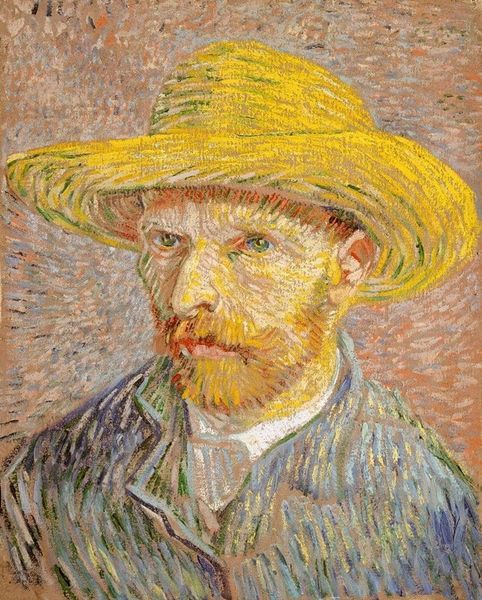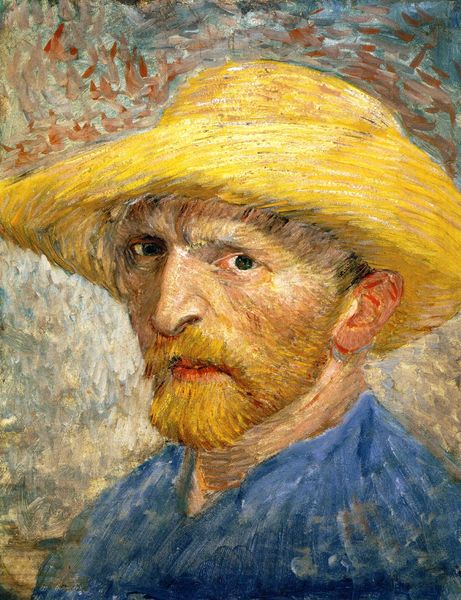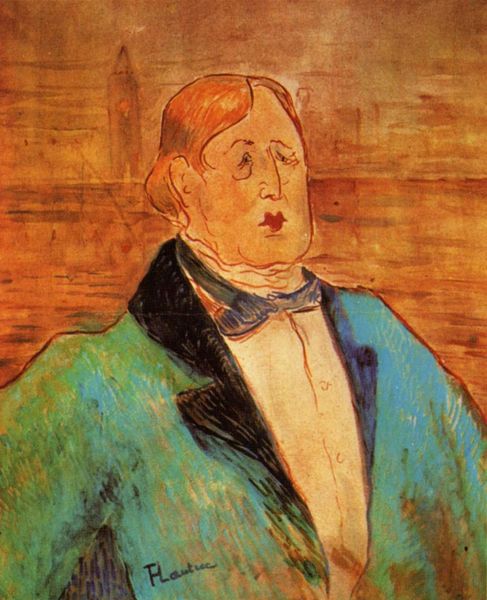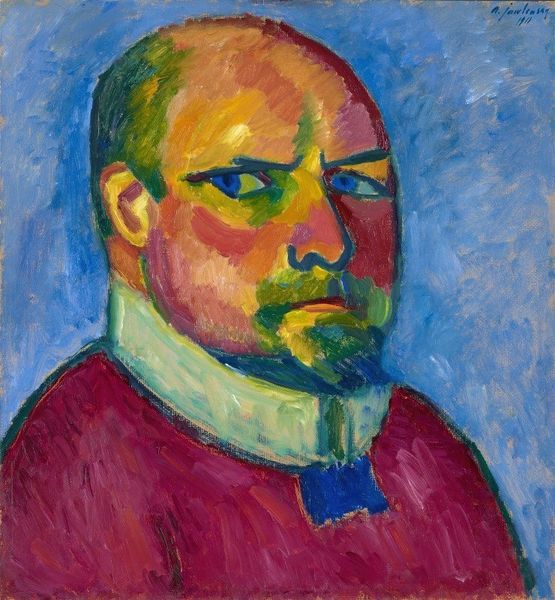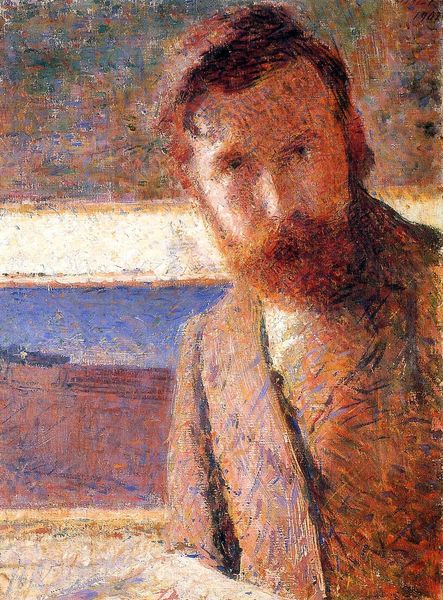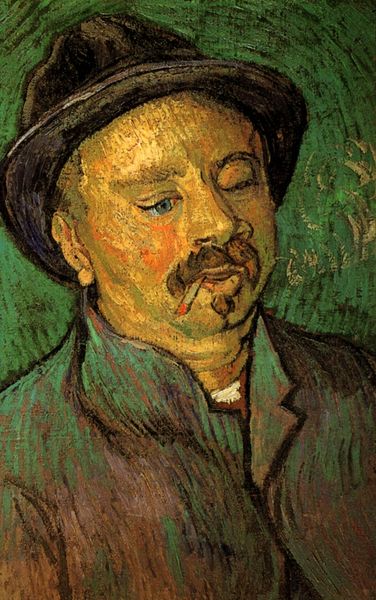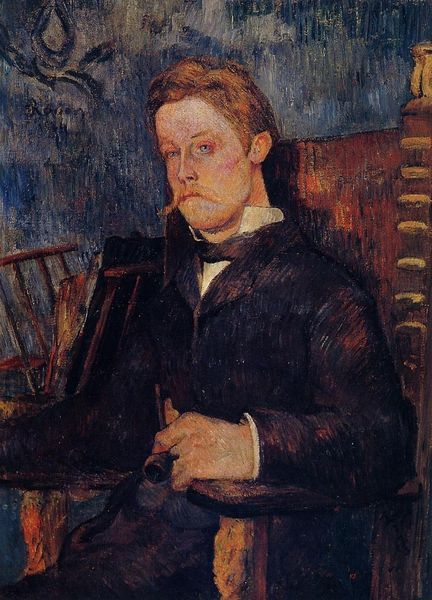
Copyright: Public domain US
Curator: This is Cuno Amiet's "Portrait von Oskar Kurt" painted in 1894. Amiet worked with oil paint, employing a technique of small brushstrokes that lend the work a hazy quality. What's your first take on it? Editor: There’s a somber feeling despite the bright dabs of color. I get a strong sense of the sitter's personality; there's an almost melancholy gaze that captures your attention immediately. Curator: That connects with Amiet's post-impressionist methods. I wonder, looking at the technique, about Amiet's engagement with production: mass-produced pigments available and the rise of manufactured canvases made paintings available to more than the elites. How does this new ability shift art towards different themes or subjects, moving away from depictions of the elite? Editor: Interesting point. Considering it as a portrait, the sitter’s eyes, colored bright blue, feel deliberately emphasized. Is there a visual message conveyed about Oscar’s clarity of thought, perhaps, or some aspect of his character that the artist wished to portray? Curator: The colors create a strange texture; you see green, pink, even purple woven throughout the background, which suggests an outdoor setting. I see Amiet investigating the potentials inherent in color production. Editor: The more I look, the more the dots of color resolve into recognizable forms – foliage, perhaps a park bench. The composition is traditional. I wonder if these are supposed to symbolize something about the sitter's world. The muted tones of the suit and tie further emphasize those piercing eyes. What might Amiet want us to glean about identity and self-presentation in the late 19th century? Curator: Indeed, it invites analysis of production and display in this context, which helps clarify our understanding of the image. Editor: Considering all, the image reveals more complexity and artistry than I initially observed. The symbolic charge makes the piece richer. Curator: Yes, seeing those symbols next to considerations of the labor and materiality lets me appreciate Amiet's accomplishment anew.
Comments
No comments
Be the first to comment and join the conversation on the ultimate creative platform.
